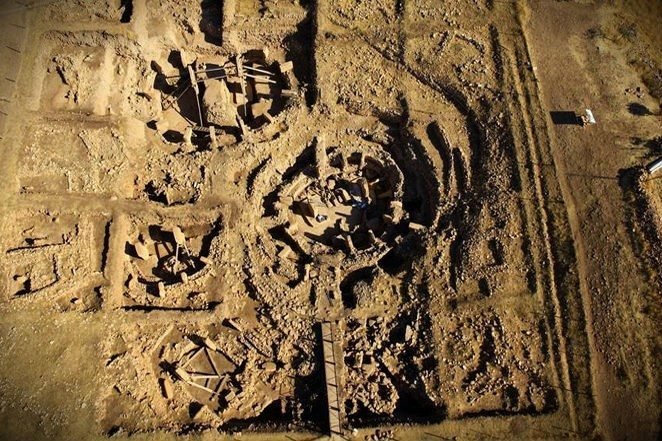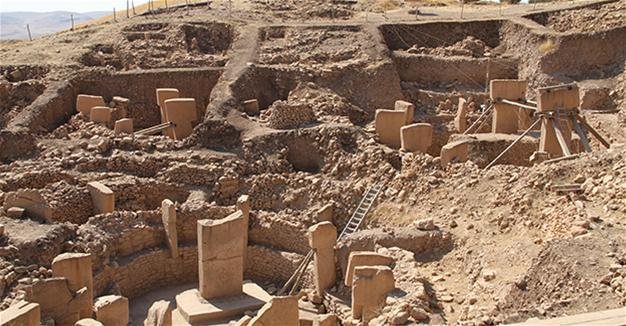A pre-historic site, about 15 km away from the city of Sanliurfa, Southeastern Turkiye. What makes Gobeklitepe unique in its class is the date it was built, which is roughly twelve thousand years ago, circa 10,000 BC.
Archaeologically categorised as a site of the Pre-Pottery Neolithic A Period (c. 9600–7300 BC) Göbeklitepe is a series of mainly circular and oval-shaped structures set on the top of a hill. Excavations began in 1995 by Prof. Klaus Schmidt with the help of the German Archeological Institute. There is archelological proof that these installations were not used for domestic use, but predominantly for ritual or religous purposes. Subsequently it became apparent that Gobeklitepe consists of not only one, but many of such stone age temples. Furthermore, both excavations and geo magnetic results revealed that there are at least 20 installations, which in archeological terms can be called a temple. Based on what has been unearthed so far, the pattern principle seems to be that there are two huge monumental pillars in the center of each installation, surrounded by enclosures and walls, featuring more pillars in those set-ups.
All pillars are T-shaped with heights changing from 3 to 6 meters. Archeologists interpret those T-shapes as stylized human beings, mainly because of the depiction of human extremities that appear on some of the pillars. What also appears on these mystical rock statues, are carvings of animals as well as abstract symbols, sometimes picturing a combination of scenes.
Foxes, snakes, wild boars, cranes, wild ducks are most common. Most of these were carved into the flat surfaces of these pillars. Then again, we also come across some three-dimensional sculptures, in shape of a predator depicting a lion, descending on the side of a T-pillar.
The unique method used for the preservation of Gobeklitepe has really been the key to the survival of this amazing site. Whoever built this magnificent monument, made sure of its survival along thousands of years, by simply backfilling the various sites and burying them deep under, by using an incredible amount of material and all these led to an excellent preservation.
Each T-shaped pillar varies between 40 to 60 tonnes, leaving us scratching our heads as to how on earth they accomplished such a monumental feat. In a time when even simple hand tools were hard to come by, how did they get these stone blocks there, and how did they erect them? With no settlement or society to speak of, with farming still a far cry away, in a world of only roaming hunter-gatherers, the complexity and developed blueprints of these temples represented another enigma for archeologists. Do we have to change our vision of how and when civilized human history began? The plot thickens..








Hi! I am a robot. I just upvoted you! I found similar content that readers might be interested in:
http://gobeklitepe.info/
Congratulations @ahmtaty! You have completed some achievement on Steemit and have been rewarded with new badge(s) :
Click on any badge to view your own Board of Honor on SteemitBoard.
For more information about SteemitBoard, click here
If you no longer want to receive notifications, reply to this comment with the word
STOP